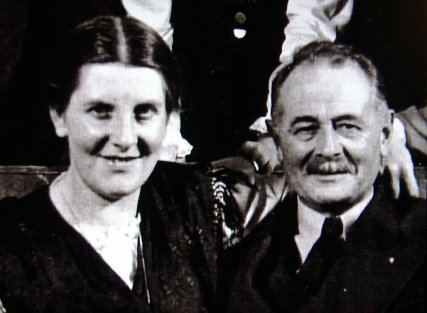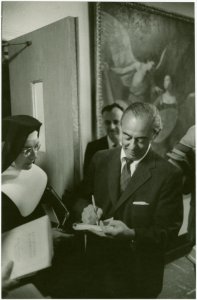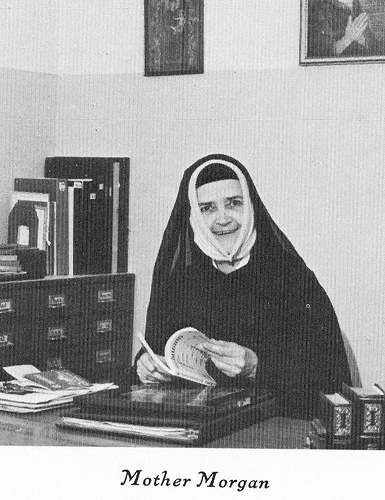Jennifer Rivera barely leaves the stage. In the past year
alone, she’s performed in Boston, Omaha, and Milwaukee. Now she’s starring as
Sister Helen Prejean in Central City Opera’s
Dead Man Walking where, during a nearly three hour tour de force, she leaves the
stage for a twenty-five second costume change. When she does leave the stage (and then the Opera House), Rivera is fulfilling another full-time job: she’s the
mother of a year-and-a-half-old boy.
“This is the hardest role I’ve done since having my son,”
Rivera said, a fact no one is arguing.
It’s more than the stage time that makes this role, based
off of the experiences of
the real Sister Helen Prejean, so demanding. In
Dead Man Walking Sister Helen writes to,
befriends, and ultimately redeems Joseph De Rocher, a fictionalized murderer
and rapist on Louisiana's death row. She travels through Bible Belt heat only to be frozen
by the questions of the victims’ parents. She climbs the prison system’s
endless bureaucratic ladder only to faint from exhaustion. And she instills
warmth and forgiveness in De Rocher only to see him injected with lethal
poison.
“I balance because my parents are both here,” Rivera explained.
“That’s how I manage. They’re here not to just help me take care of my son, but
for emotional support as well. My dad after the opening said, ‘My gosh, now I
understand what you’ve been going through.’”
 |
Jennifer Rivera, as Sister Helen, stars in Central City Opera's Dead Man Walking.
Photo by Mark Kiryluk. |
Despite these challenges, mezzo-soprano Rivera approached the role as any
professional would – by reading the eponymous
book upon which Jake Heggie and
Terrence McNally’s opera is based. “The thing I took away from her book was Sister
Helen’s basic idea of compassion and dignity for all human beings, and yet it’s
easy to not think about it because when you’re dealing with criminals you
forget about their humanity.”
Rivera further humanizes her Sister Helen by physicalizing
her doubts and understanding the justice the opposing side craves. “I was
associating a lot with the parents because I’m a mother, so the scenes with the
parents asking, ‘How can you possibly counsel this person who killed my child?’
really resonated with me,” Rivera said. “Those parts upset me; I could
understand what the parents were saying.”
Luckily, Rivera juxtaposes the heavy opera with Colorado's scenic delights. "It's bucolic here," she said. With rehearsals ended she now has more time to spend with her son and family in Central City and on day trips.
This is a difficult show, however, to not ponder after the curtain call. Aside from trying to make sense of the opera’s moral gray
area, Rivera has heard how the show also divides its audience. Capital
punishment is still legal in Colorado and
31 other states, though
many sympathize with its victims. Others feel differently. “My husband did tell
me that there was a guy sitting next to him who was really stoic all night and
only applauded when the paralegal announced that the death sentence would
stay,” Rivera shared.
Regardless of opposing views, Rivera found ways to fuel
Sister Helen’s altruistic spirit. First, she created easy camaraderie with
Michael Mayes who plays the imprisoned De Rocher. “We’ve known each other for years,
and then we worked together this past fall,” she stated. Naturally, the characters’
emotional journeys further brought them together. “He’s very convincing. I was
giving him hugs during the breaks!” said Rivera.
 |
Jennifer Rivera in a scene with Michael Mayes who plays
death row inmate Joseph De Rocher in Dead Man Walking. Photo by Kira Horvath. |
She also met
composer Jake Heggie after a dress rehearsal. “He
could not be nicer or more supportive,” she beamed. “It kind of comes out in
his music too; his music’s very compassionate.” Heggie also gave Rivera a
pointer after the show – he wanted her to find Sister Helen’s inner joy. This
was not a difficult shift for the contagiously warm Rivera, but a particular phone
call certainly helped make her understand Heggie’s note.
“He got me in contact with Sister Helen,” Rivera said. “She’s
all the things you hope she would be – she’s a good listener, very
compassionate, very down to earth. She said she feels a kinship with all the
women who play her because she feels like we go through her emotional journey in a certain way. You can’t really compare acting this
scenario to living it and witnessing people die, but she was like, ‘You know,
it’s kind of the same thing. You’re experiencing it in your own way,’ which is
a pretty generous way of thinking about it.”
Their real life experiences may be unique, but Rivera is
truly not so different from her role’s namesake. Both women are tireless,
passionate, and work to broaden their respective audiences’ outlooks. “The show
makes me want to talk about this subject,” Rivera said. “It makes me feel proud
to be a part of it because I feel it could affect someone’s opinions.”
Dead Man Walking runs through July 25th at the Central City Opera House.























